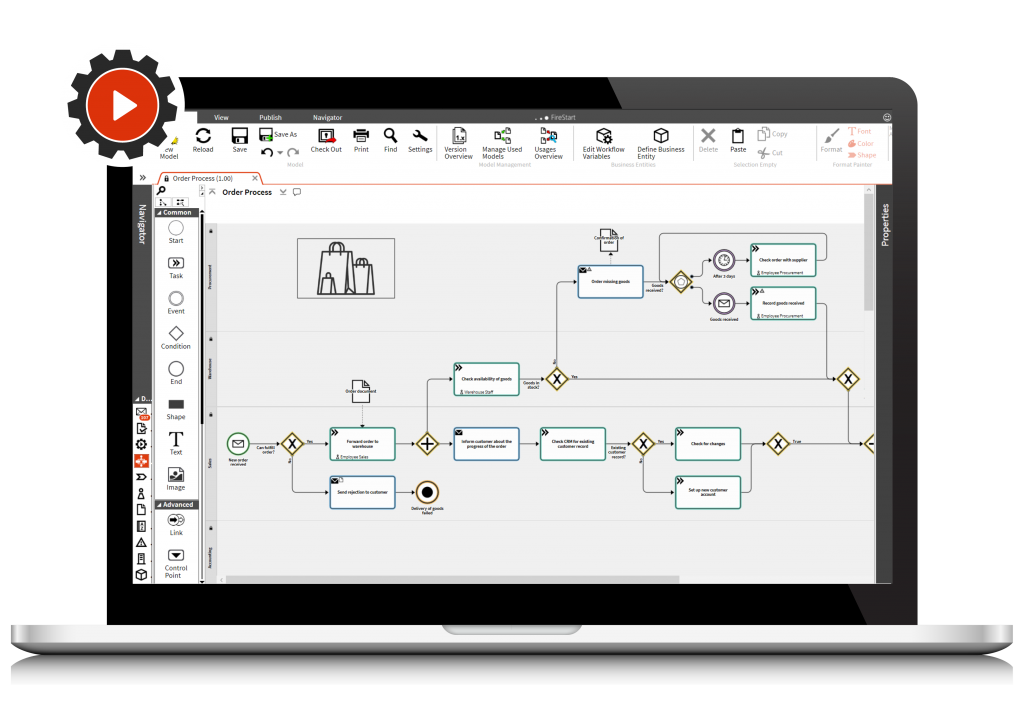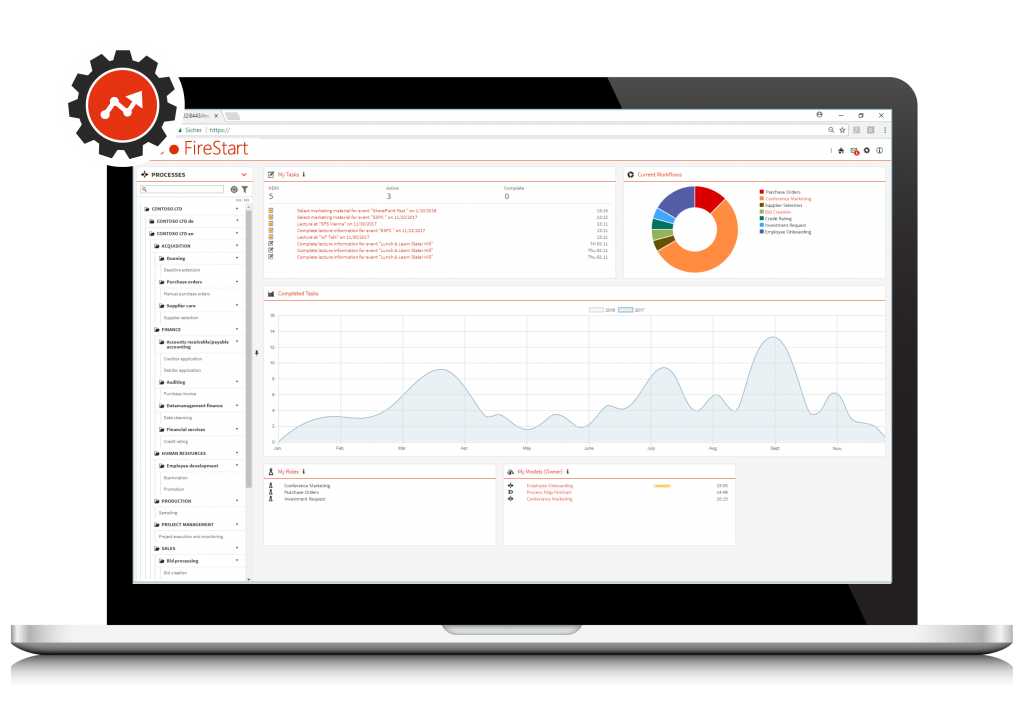Model integrate and adapt, with next generation BPM solutions from FireStart
Business process management in its fullest, evolved sense now encompasses more than an examination of the way an organization conducts itself.
Despite the term (BPM) being in common parlance, FireStart goes far beyond, as one of a new generation of BPM providers enabling organizations to model processes simply, then automate these processes, and then, in turn, draw insightful process intelligence in real time as work moves through the business.
FireStart’s true capabilities stem from the first stage of a digital transformation exercise, being that of a simple yet powerful process modeling interface.
Low-code and no-code are terms used to describe this non-IT driven creation of a virtualized working environment. In practical terms, that means drag-and-drop graphics, and a powerful toolkit representing systems, people, work decisions, and workflows.
FireStart’s graphical user interface allows the nesting of information, so users can drill down into as much detail as required, or “zoom out” to see an overview. Locating bottlenecks and problem points is, therefore, a simple process.
Once established, business processes as they exist (and as they might appear after transformation exercises) can be graphically associated with real operational systems, such as back-end databases, ERP, CRM, and other enterprise applications, including Microsoft Outlook.

FireStart
Thus, what began as a modeling exercise transforms into a live representation, with real data flows depicted in the same interface, and using the same familiar schema.
Once processes become clearly depicted in FireStart’s representative interfaces, they can be linked with one another and automated, with disparate activities linked and undertaken by software. This removes repetitive, mistake-prone and resource-hungry activities from workflows, and releases personnel and systems for re-tasking.
Even the most complex of activities can be built simply using drag-and-drop, clearly hierarchical modeling and hidden nests of logic – all as simply as building with blocks.
What further sets FireStart’s offerings apart from many of its competitors is that its schema is not proprietary.
This means that business process modeling data can be simply retasked or allowed to flow into third party toolsets already in use: either reporting tools like Crystal, or into established databases. Use of BPMN allows process modeling & transformation data migration, as and where necessary.
Furthermore, FireStart’s capabilities extend much deeper than basic Boolean operations: if x then y.
This capability reflects the deep complexity involved in the processes of the larger enterprise, where multiple effects, with accompanying provisos and caveats reflect the real-life processes necessary in a complex, multi-division organization.
FireStart’s solutions are not dependent on any particular existing infrastructure such as Dynamics or SharePoint (although they will happily work alongside these solutions and many more besides).
Deployment, additionally, can be in-house on existing hardware & systems, or deployed as a hybrid model – the solutions on offer will not push an organization into the cloud prematurely, nor do they depend on a burn-down-and-rebuild approach
As any Change Manager will tell you, transformations in large enterprises take time. To a certain extent, change is continuous, so there’s always a need for BPM systems.

FireStart
Managers will therefore find FireStart’s business intelligence facilities invaluable (the company calls these process intelligence systems).
They draw live data from systems as mapped and integrated in the planning stages, and report back on efficiencies, rendered savings & improvements, and areas for possible improvements. Second-by-second data can be useful, as can the Business Process Intelligence’s longer-term reports, such as six-month overviews.
Resource management insights will lead to better results right across the enterprise, with more efficient working methods and system utilization across the board.
Timeline trends and performance matrices combine to give data across a range of benchmarks, such as the use of automation systems: are these being used, and if not, why not? Which resources need more capability (clustering of overworked servers, more staff, longer allowed time frames, and so on)?
FireStart’s methods allow business process management and changes to be firmly rooted in real-world performance metrics. This insightful, practical data is business-oriented and business-driven and is therefore fit for the next generation of business supporting technologies. To learn more about how your organization can drive efficiencies and make full use of its resource allocations, get in touch with a FireStart representative today and request a demo.









